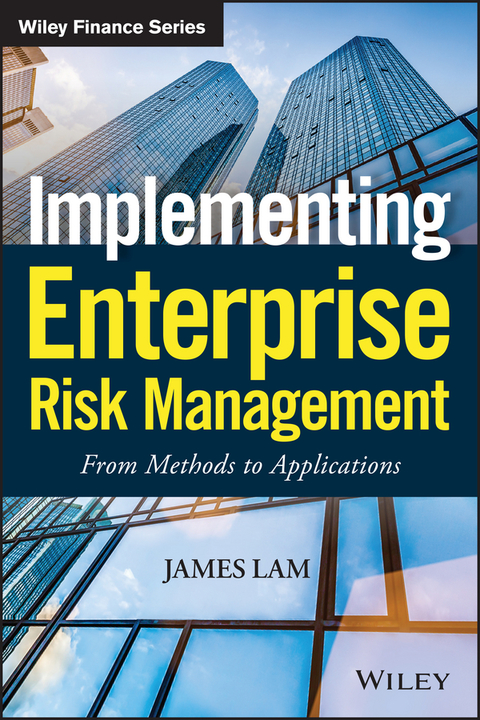Description
Efnisyfirlit
- Cover
- Title Page
- Copyright
- Dedication
- Preface
- Overview of the Book
- Suggested Chapters by Audience
- Acknowledgments
- Part One: ERM in Context
- Chapter 1: Fundamental Concepts and Current State
- Introduction
- What Is Risk?
- What Does Risk Look Like?
- Enterprise Risk Management (ERM)
- The Case for ERM
- Where ERM Is Now
- Where ERM Is Headed
- Notes
- Chapter 2: Key Trends and Developments
- Introduction
- Lessons Learned from the Financial Crisis
- The Wheel of Misfortune Revisited
- Global Adoption
- Notes
- Chapter 3: Performance-Based Continuous ERM
- Introduction
- Phase Three: Creating Shareholder Value
- Performance-Based Continuous ERM
- Case Study: Legacy Technology
- Notes
- Chapter 4: Stakeholder Requirements
- Introduction
- Stakeholders Defined
- Managing Stakeholder Value with ERM
- Implementing a Stakeholder Management Program
- Appendix A: Reputational Risk Policy
- Notes
- Part Two: Implementing an ERM Program
- Chapter 5: The ERM Project
- Introduction
- Barriers to Change
- Establish the Vision
- Obtain Buy-In from Internal Stakeholders
- Assess Current Capabilities Against Best Practices
- Develop a Roadmap
- Appendix A: ERM Maturity Model
- Appendix B: Practical Plan for ERM Program Implementation
- Chapter 6: Risk Culture
- Introduction
- Risk Culture Success Factors
- Best Practice: Risk Escalation
- Conclusion
- Notes
- Chapter 7: The ERM Framework
- Introduction
- The Need for an ERM Framework
- ERM Framework Criteria
- Current ERM Frameworks
- An Update: The Continuous ERM Model
- Developing a Framework
- Conclusion
- Notes
- Part Three: Governance Structure and Policies
- Chapter 8: The Three Lines of Defense
- Introduction
- COSO’s Three Lines of Defense
- Problems with This Structure
- The Three Lines of Defense Revisited
- Bringing It All Together: How the Three Lines Work in Concert
- Conclusion
- Notes
- Chapter 9: Role of the Board
- Introduction
- Regulatory Requirements
- Current Board Practices
- Case Study: Satyam
- Three Levers for ERM Oversight
- Conclusion
- Notes
- Chapter 10: The View from the Risk Chair
- Introduction
- Turnaround Story
- The GPA Model in Action
- Top Priorities for the Risk Oversight Committee
- Conclusion
- Notes
- Chapter 11: Rise of the CRO
- Introduction
- History and Rise of the CRO
- A CRO’s Career Path
- The CRO’s Role
- Hiring a CRO
- A CRO’s Progress
- Chief Risk Officer Profiles
- Notes
- Chapter 12: Risk Appetite Statement
- Introduction
- Requirements of a Risk Appetite Statement
- Developing a Risk Appetite Statement
- Roles and Responsibilities
- Monitoring and Reporting
- Examples of Risk Appetite Statements and Metrics
- Notes
- Part Four: Risk Assessment and Quantification
- Chapter 13: Risk Control Self-Assessments
- Introduction
- Risk Assessment: An Overview
- RCSA Methodology
- Phase 1: Setting the Foundation
- Phase 2: Risk Identification, Assessment, and Prioritization
- Phase 3: Deep Dives, Risk Quantification, and Management
- Phase 4: Business and ERM Integration
- ERM and Internal Audit Collaboration
- Notes
- Chapter 14: Risk Quantification Models
- Introduction
- Market Risk Models
- Credit Risk Models
- Operational Risk Models
- Model Risk Management
- The Loss/Event Database
- Early Warning Indicators
- Model Risk Case Study: AIG
- Notes
- Part Five: Risk Management
- Chapter 15: Strategic Risk Management
- Introduction
- The Importance of Strategic Risk
- Measuring Strategic Risk
- Managing Strategic Risk
- Appendix A: Strategic Risk Models
- Notes
- Chapter 16: Risk-Based Performance Management
- Introduction
- Performance Management and Risk
- Performance Management and Capital
- Performance Management and Value Creation
- Summary
- Notes
- Part Six: Risk Monitoring and Reporting
- Chapter 17: Integration of KPIs and KRIs
- Introduction
- What Is an Indicator?
- Using Key Performance Indicators
- Building Key Risk Indicators
- KPI and KRI Program Implementation
- Best Practices
- Conclusion
- Notes
- Chapter 18: ERM Dashboard Reporting
- Introduction
- Traditional Risk Reporting vs. ERM Dashboard Reporting
- General Dashboard Requirements
- Implementing ERM Dashboards
- Avoid Common Mistakes
- Best Practices
- Notes
- Chapter 19: Feedback Loops
- Introduction
- What Is a Feedback Loop?
- Examples of Feedback Loops
- ERM Performance Feedback Loop
- Measuring Success with the ERM Scorecard
- Notes
- Part Seven: Other ERM Resources
- Chapter 20: Additional ERM Templates and Outlines
- Introduction
- Strategic Risk Assessment
- CRO Report to the Risk Committee
- Cybersecurity Risk Appetite and Metrics
- Model Risk Policy
- Risk Escalation Policy
- Notes
- About the Author
- Index
- End User License Agreement






